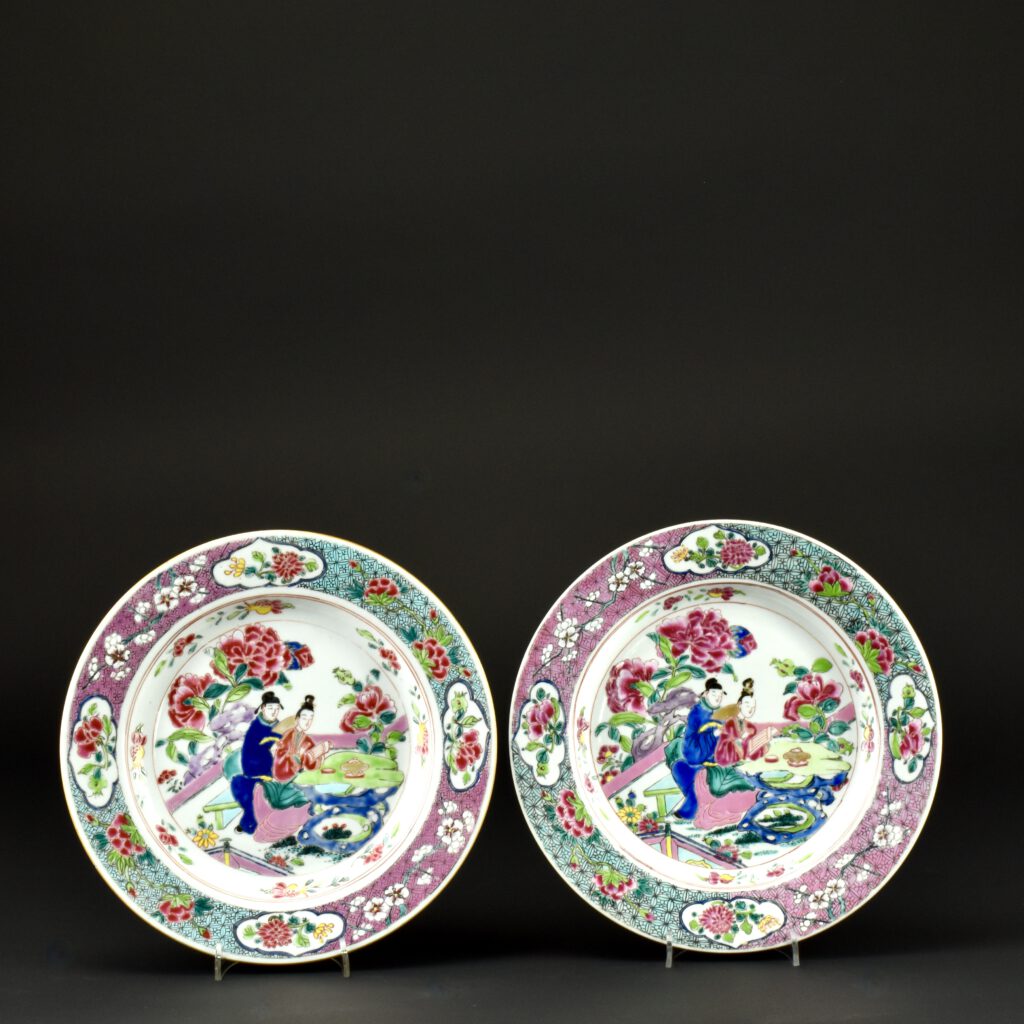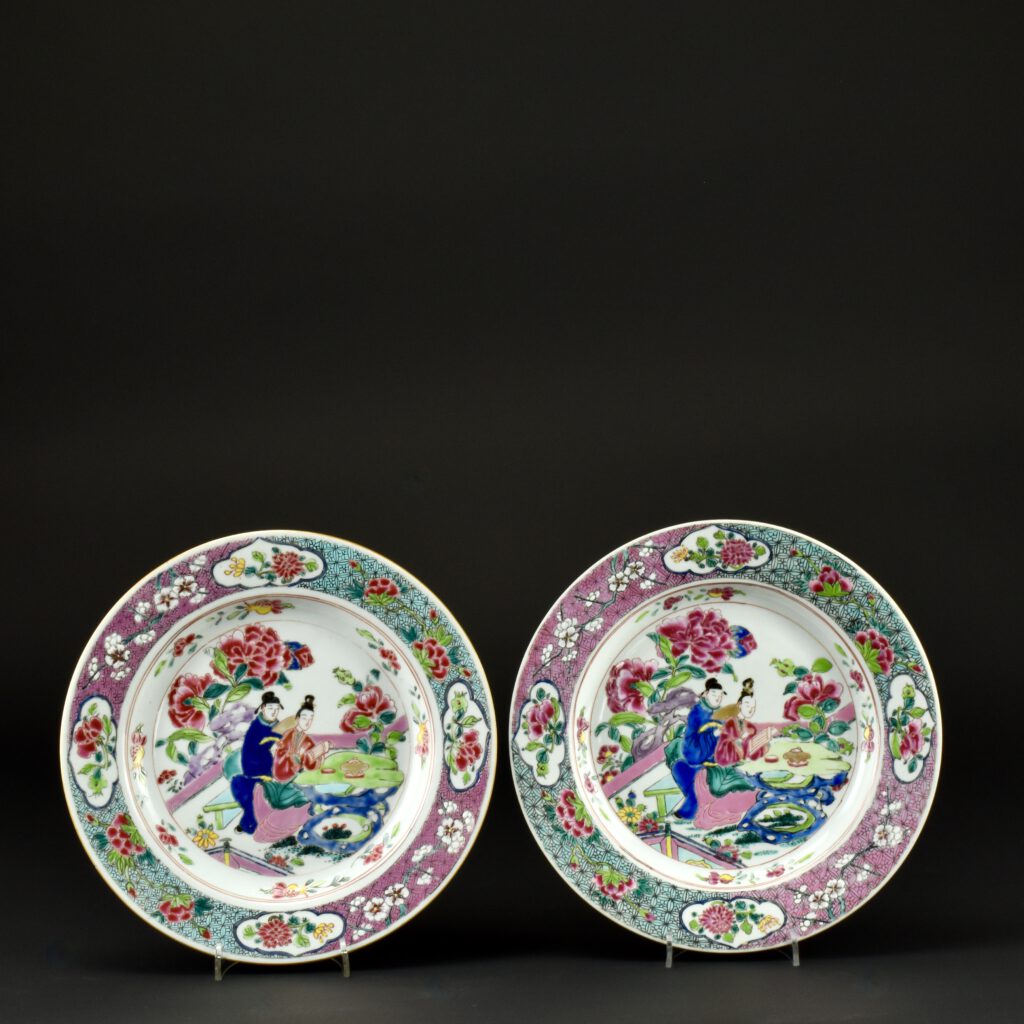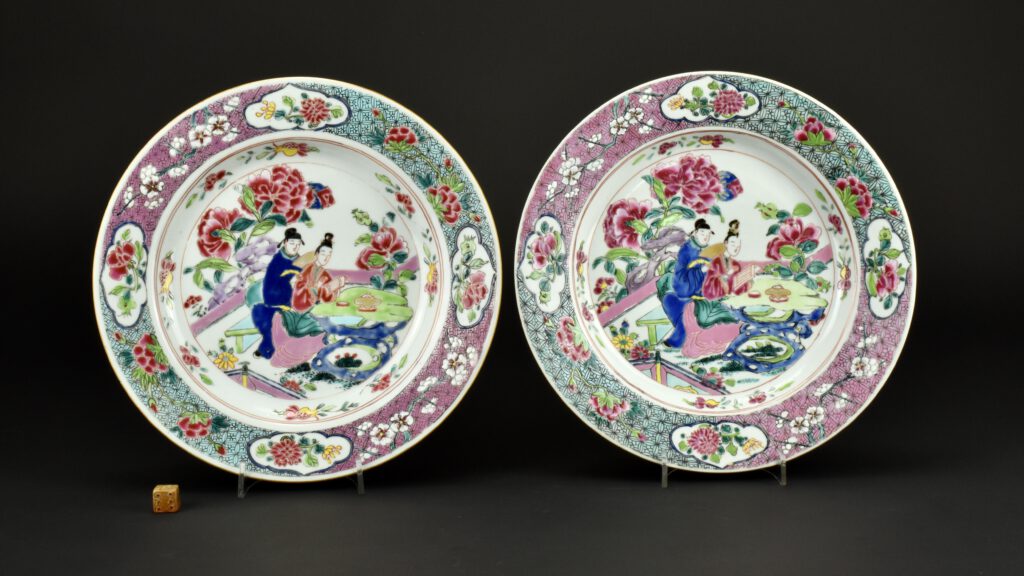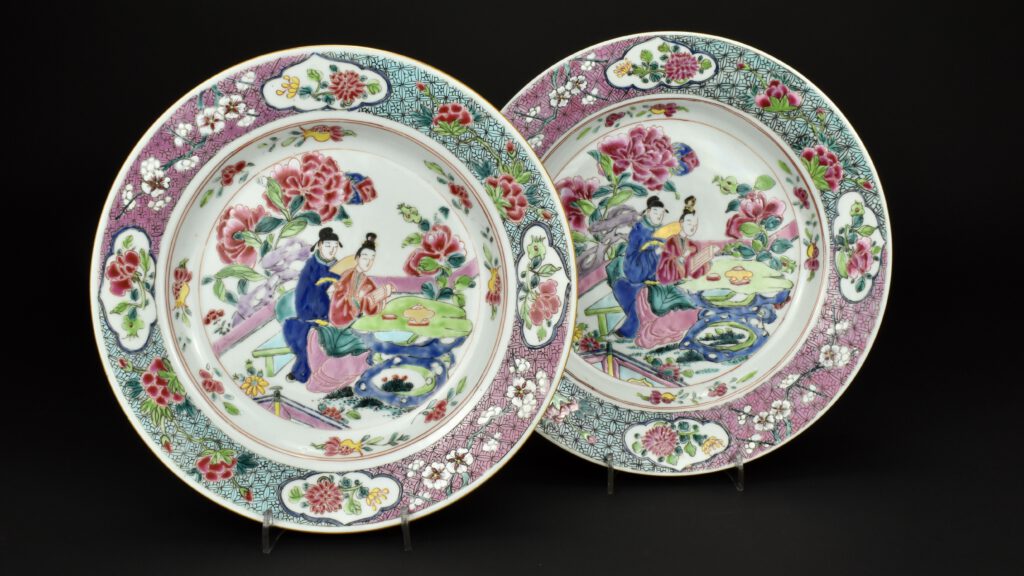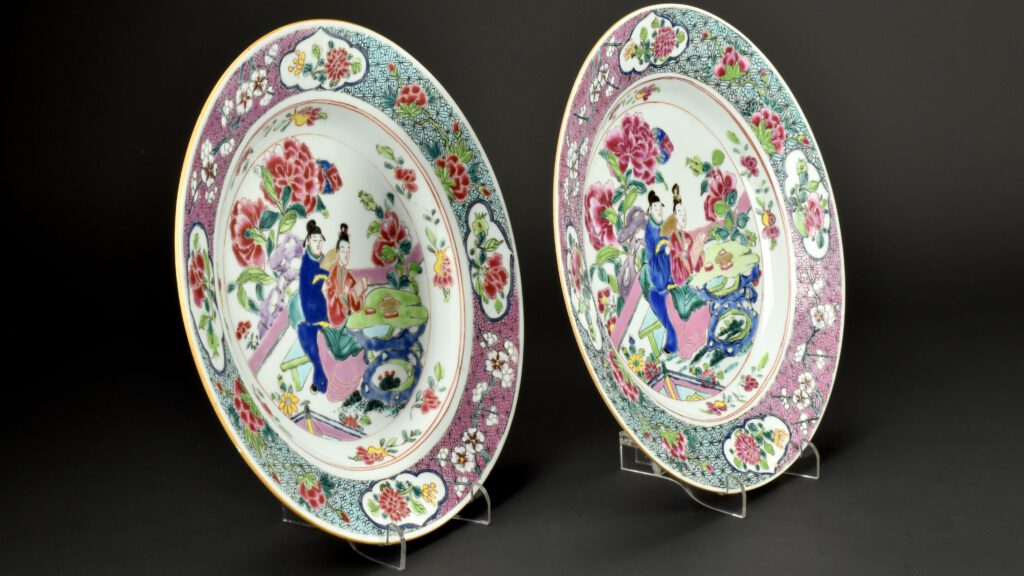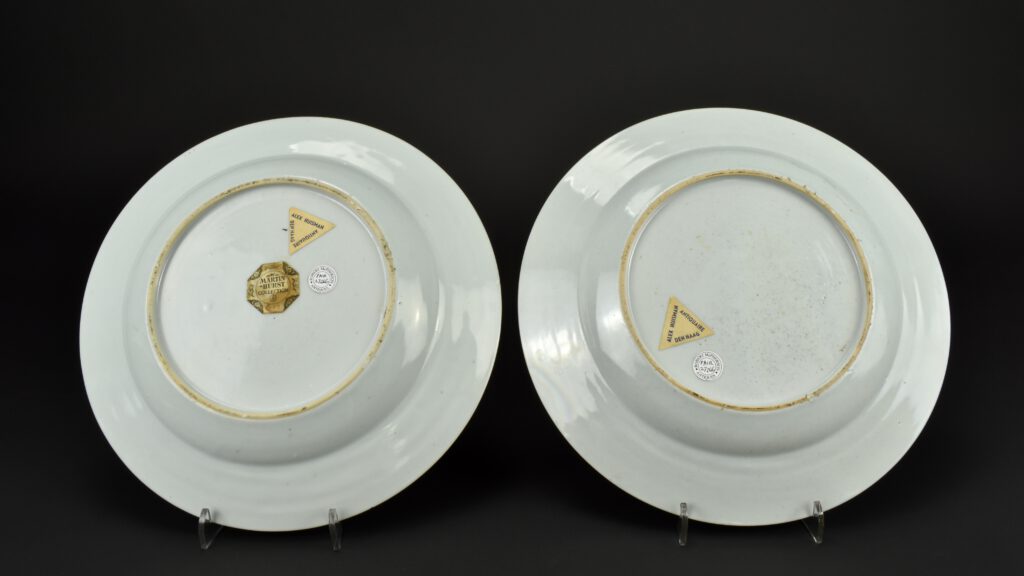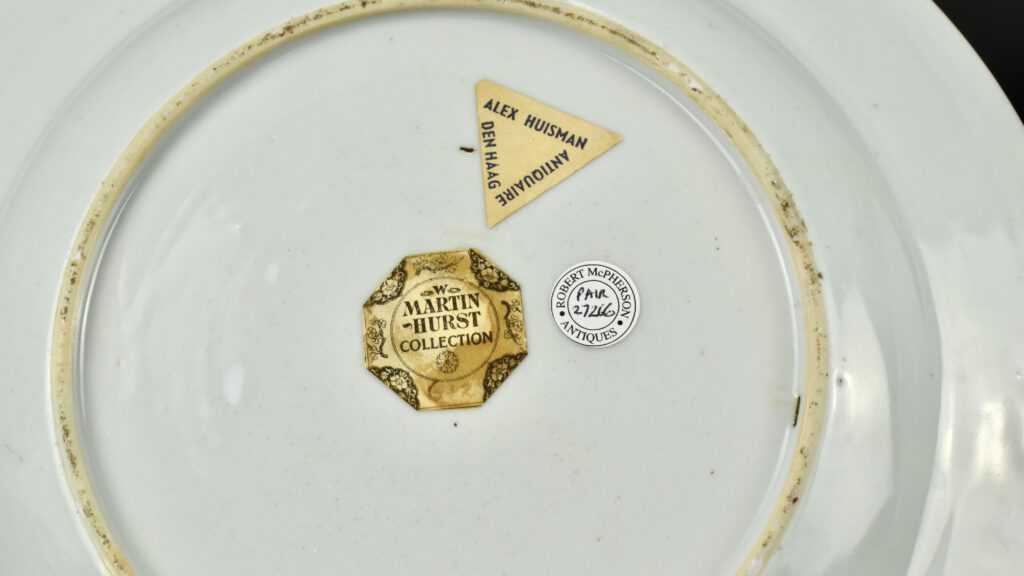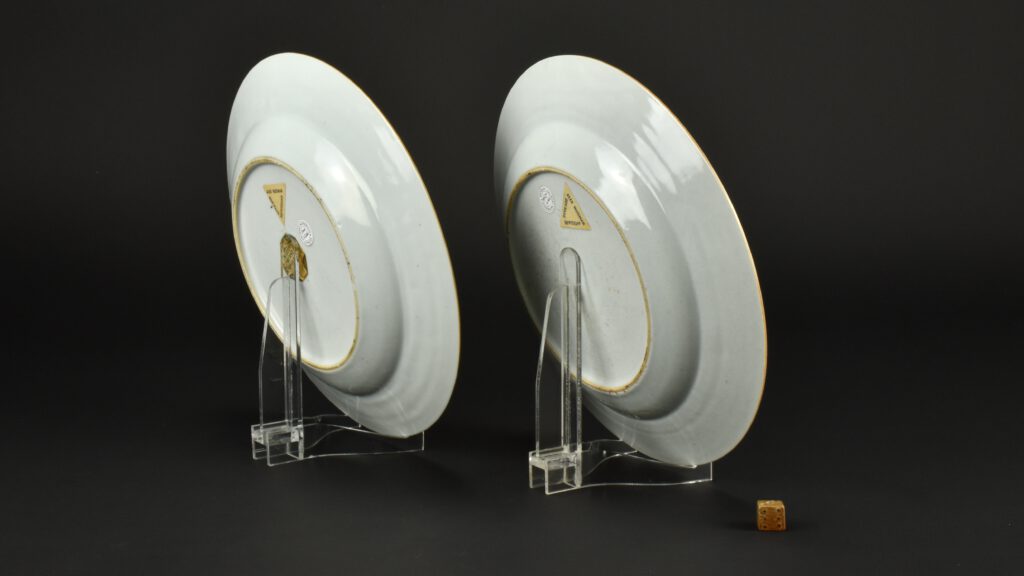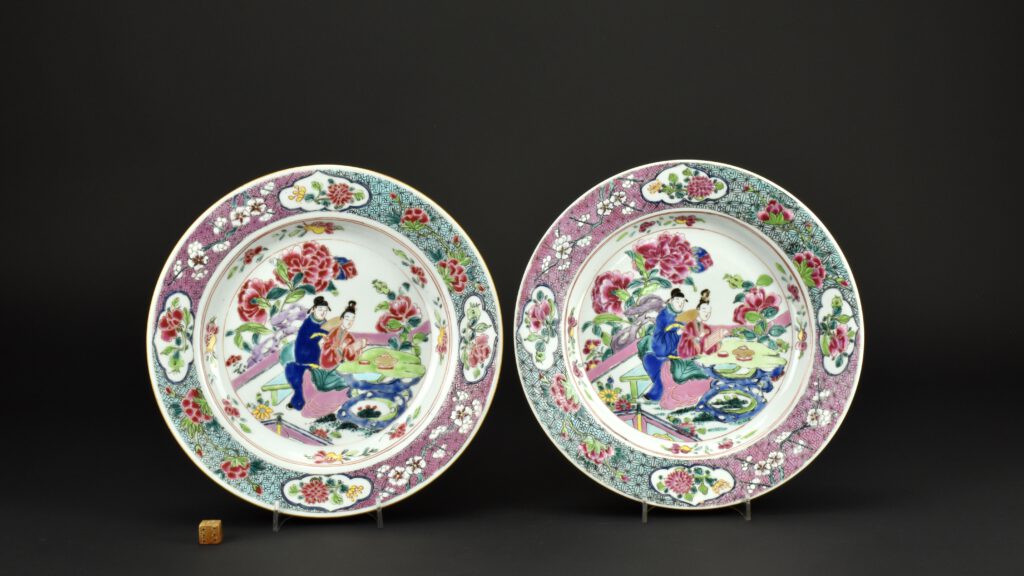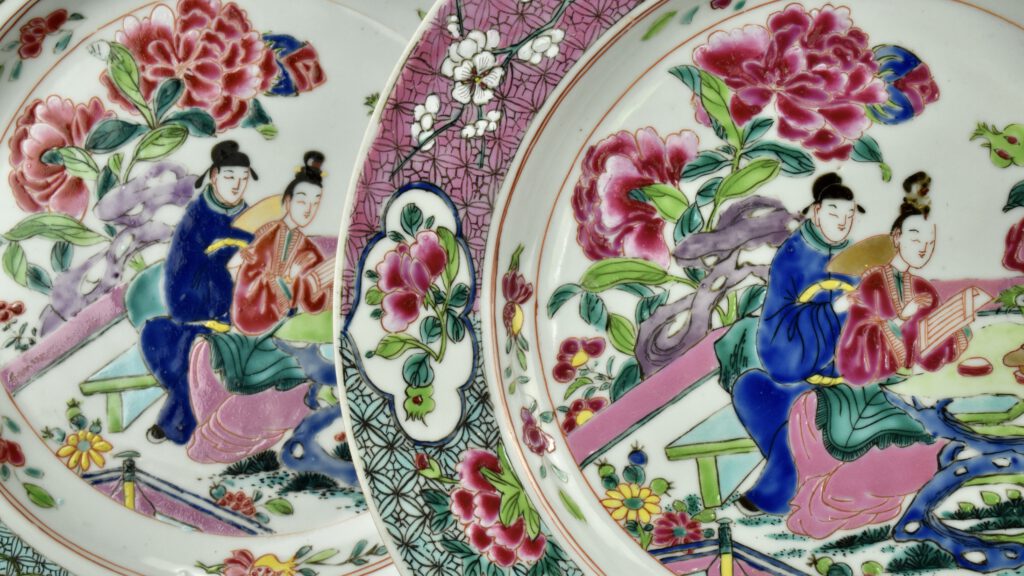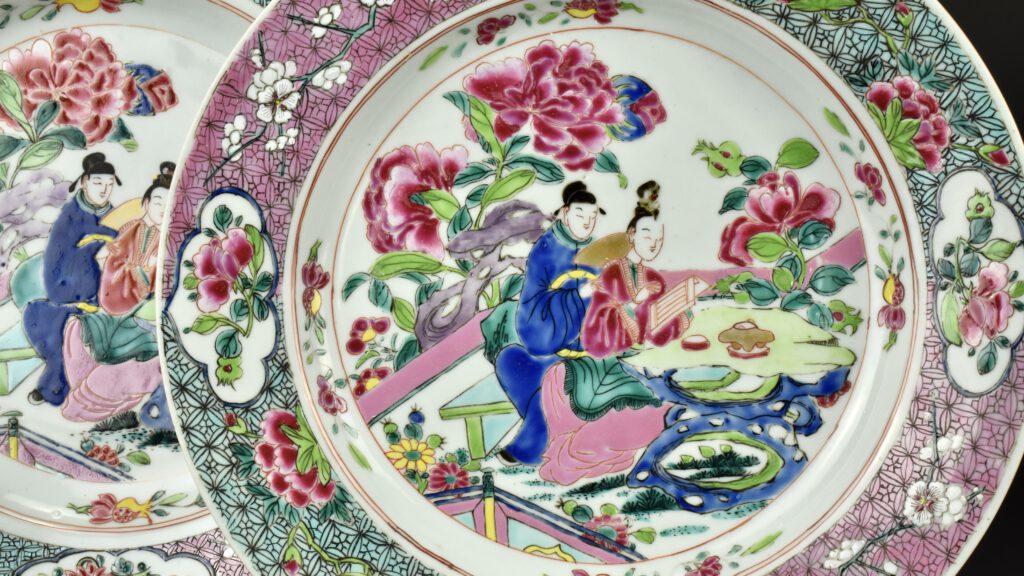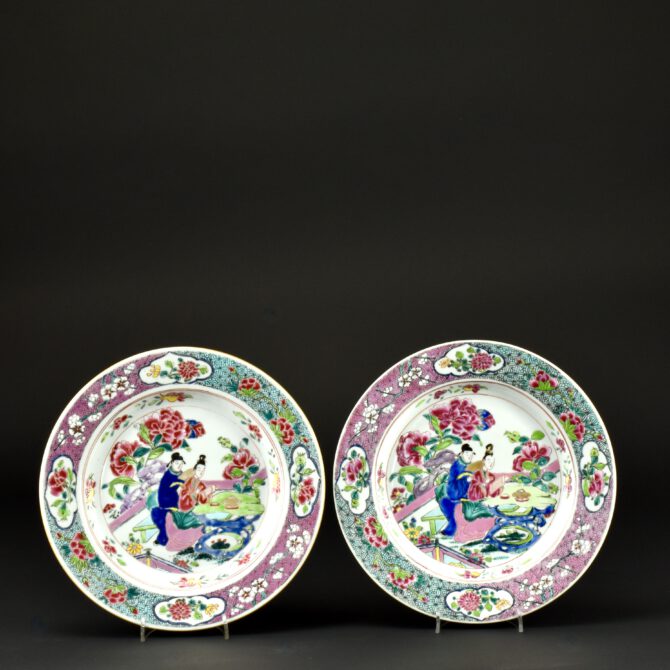
A Pair of Yongzheng Famille Rose Porcelain Plates
A Pair of Pink and Pale Green Ground Famille Rose Plates, Yongzheng Period 1723 – 1735. From the collection of William Martin-Hurst (1876-1941). This pair of finely enamelled porcelain plates depicts a garden scene with an elegant lady reading at rustic table made from rocks lingbai rocks (from Lingbi County in Anhui Province). Behind her is a scholar seated on a daybed, he has one hand on her shoulder, the other holds a gold fan. This garden scene is framed with a balustraded fence and a pink wall, beyond the garden is a large ornamental Lingbi rock with a very large flowering peony. The cavetto has four groups of pomegranate and peony. The flared rim has two mirrored coloured panels. One pair has a cash emblem diaper pattern on a pink ground, decorated with flowering prunus. The other pair also have a cash emblem diaper pattern but on a pale green ground. Lingbai rocks were important artist and cultural additions to Chinese gardens. This pair of Yongzheng plates were sold by the Dutch antique dealer Alex Huisman (1891 -1949), they were bought by the famous English collector of fine Famille Rose porcelain, William Martin-Hurst (1876-1941), see Provenance.
See Below For More Photographs and Information.
SOLD
- Condition
- In excellent condition, minor wear to the womans head on one of the plates.
- Size
- Diameter 23 cm (9 inches)
- Provenance
- Alexander Huisman (21st of February 1891 to September 3rd 1949) A Dutch antique dealer born in Den Haag and died in Apeldoorn. William Martin-Hurst (1876-1941), The End House, Roehampton (now part of London). Martin-Hurst was the Managing Editor of the 'Exclusive News Agency'. He wrote articles on Yongzheng and Qianlong porcelain, most notably collaborating with George Williamson on The Book of Famille Rose (1970), many of the pieces illustrated came from William Martin-Hurst's own collection. The collection is well know, the quality of the pieces were very high. Mostly not in 'Chinese taste' but made in the Yongzheng and early Qianlong periods. Sotheby's sold many of his pieces after his death. There were three sales in London in 1942 and 1943. More pieces were sold at Sotheby's in 1981. Information from PROVENANCE. Collectors, Dealers and Scholars in the Field of Chinese Ceramics in Britain and America. ( Davids, Roy & Jellinek, Dominic. Great Haseley, 2011. 500 pp. Over 150 illustrations. 28×22 cm. Cloth).
- Stock number
- 27266
Information
Information about William Martin-Hurst (1876-1941).
From Provenance :
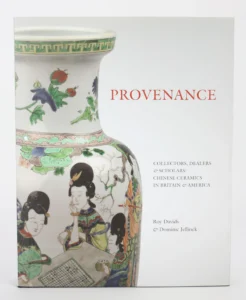
Famille Rose Porcelain
China's ceramics industry has for thousands of years be connected to events in the world outside it's own borders. Importing materials, assimilating foreign ideas, foreign tastes and inventions, as well as making ceramics for cultures completely foreign to it's own tastes and ethos China has always adapted it's ceramics industry to fit the needs of it clients who ever they may be. It was during the Qing dynasty, especially from the late 17th century, that the Chinese became especially interested in Western technology and science. Famille Rose enamels were developed as a consequence of this interaction, the Chinese referred to these enamel colours as foreign colours from as early as 1734 but there origin can be traced back to the 1720`s if not earlier. The impetus for the development of this new palette was the direct involvement emperor Kangxi (1662-1722) who desired to improve expertise in the manufacture of all crafts, especially in relation to learning about technology from abroad. Famille Rose enamels were different to the earlier Famille Verte enamels in a number of ways, the most obvious being the colours used, but the enamels themselves were different in that the translucent colours of the earlier palette were making way to thicker impasto opaque enamels of Famille Rose. The rose colour that gives its name to this colour scheme is created from colloidal gold (a suspension or colloid of sub-micrometre-sized particles of gold in a fluid). This ruby red colour was augmented by two other newly introduced coloured enamels, an opaque white which was made from fine crystals of lead arsenate, the other new colouring agent was lead stannate used for the opaque yellow. These colours, while new to China, were certainly not new to Europe but the effect of them on porcelain certainly was new. Famille Rose didn't entirely replace Famille Verte as such but it certainly became far more popular. Famille Rose enamel was used in the Imperial workshops to paint some of the most complex intricate designs ever carried out on Chinese porcelain, it was also used for Chinese taste or domestic market porcelain, but was also used to decorate a vast array of Chinese export porcelain of all shapes and sizes.
Scholars Rocks :
Chinese scholars` rocks, also known as scholar stones or viewing stones, are small shaped or naturally-occurring rocks appreciated by Chinese scholars from the Song dynasty onwards, and quite frequently found in traditional Chinese gardens.
The most highly regarded stones are lingbi rocks, from Lingbi County of Anhui Province, with the finest examples dating from the Ming dynasty and Song dynasty.
Taihu rocks are also prized, and are commonly used as garden stones. They influenced the development of Korean stone art and Japanese suiseki aesthetics and styles and were an important part of Confucian art. Natural stone and rock formations, with no artificial carvings, are preferred. Rocks would sometimes be carved and then thrown back into a lake so that any markings could be washed away. Scholars rocks can be any colour, and contrasting colours are not uncommon. Sometimes they feature painted patterns, which can be of any subject, either natural or abstract. The size of the stone can also be quite varied: scholars rocks can weigh either hundreds of pounds or less that one pound. Subtlety of colour, shape, and markings is also desired, as is beauty of texture and shape. Scholars stones are usually reminiscent of someone or something, or it may convey a spiritual nature that moves viewers in some way. They are usually set upon a stable surface, such as a rosewood pedestal that has been carved specifically for the stone.
